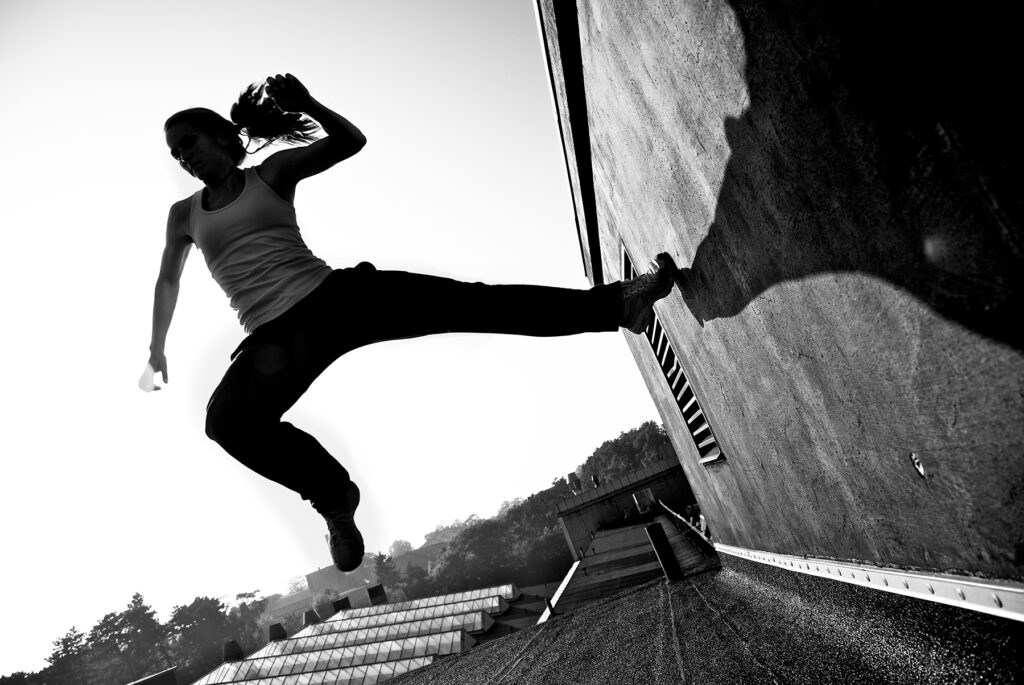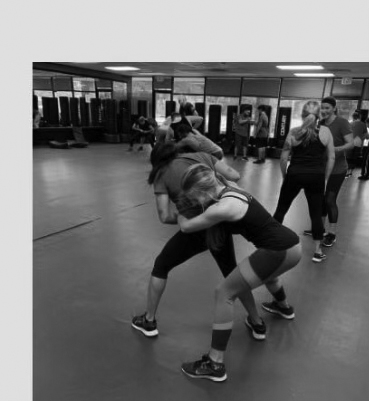In a world of treadmills and weight machines, it can be easy to think of exercising as a
grueling chore. Instead of dreading your next workout, try these exercises-in-disguise
and most likely you’ll be having so much fun you won’t realize you’re
burning calories.
Dance Your Way to Health
Whether you’re grooving with friends, learning new steps in a classroom or having a solo kitchen dance party, dancing is a fun way to get your whole body in shape, both physically and mentally. Because the activity is a full-body workout, no muscle is left behind no matter which style you decide to try. In addition to improving cardiovascular health, strength, and balance, dance is beneficial for your mental well-being, as the brain power needed to focus on the various moves and patterns creates an excellent form of mental exercise.
Before you start your dance journey, consider your fitness level and goals. For those wanting to improve their posture and balance, ballroom or ballet could be a perfect fit, while high-energy dance routines like Zumba and hip hop are great for getting fit and losing weight. And while it’s never too late to start dancing, it’s also important to consider any physical limitations. Many forms, including ballroom, are appropriate for people with health issues or limited mobility. Talk to your doctor or instructor before taking a class if you have concerns about the intensity of the class.
- Arthur Murray Dance Center: Social and wedding dance lessons, 3010 Williams Dr., Suite 177.
- Arts Avenue Theater and Dance: Tap, jazz, ballet, hip hop, lyrical, and musical theater for kids and youth, 614 E University Ave.
- Dance Empower:Tap, jazz, ballet, hip hop, acro, lyrical, and musical theater for various ages, 71 Wildwood Dr., Suite 203.
- Palace Theatre: Jazz, tap, and ballet classes for various ages, 810 S Austin Ave.
- Performing Arts Studio:Tap, jazz, ballet, hip hop, acro, contemporary, and musical theater for preschool to high school ages, and tap for adults, 900 N Austin Ave., Suite 123.
- Recreation Center:Ballroom and country western classes for various ages, creative movement for kids, 1003 N Austin Ave.
- USA Dance:Hosts social dances the third Saturday of every month at Christ Lutheran Church, 510 Luther Drive. $5 for members, $10 for non-members.
Get Rolling
Whereas running and walking can wreak havoc on your joints, roller skating is a low-impact exercise that could be a good fit for people with knee, hip, and ankle conditions. Whether you’re skating at a local rink or around your neighborhood, this workout on wheels is a great exercise for your legs that also strengthens your heart and improves balance and coordination.
When it comes to choosing the right kind of skates, think about what kind of skating you want to do. If you’re more interested in outdoor skating, consider inline skates—which have wheels all in one line—or, if you’re planning to do a lot of rink skating, quad skates are the way to go, with two wheels side by side in the front and two side by side in the back. You should be able to wear skates that are the same size or slightly larger than your shoe size. Don’t forget to add safety gear—elbow and knee pads, wrist guards, and a helmet.
- Austin Roller Rink: 11600 Menchaca Rd. #101, Austin
- Bartholomew Roller Derby Track: 2104 E 51st St., Austin
- Millennium Youth Entertainment Complex: 1156 Hargrave St., Austin
- Playland Skate Center:8822 McCann Dr., Austin
- Rock Sports Arena: 3918 Gattis School Rd. #102, Round Rock
Underground adventure
Whether you’re enjoying a leisurely stroll through a show cave or exploring an undeveloped part of the underground world, caving is an adventurous way to improve both your mental and physical health. Texas is home to thousands of caves, with the Texas Cave Trail consisting of five show caves. From beginner-friendly tours to wild, off-path ones, the trail offers excursions for caving enthusiasts of all skill levels. All caves are about 70 degrees year round, with tours averaging from one to four hours. Some caves offer walk-in tours while others require reservations, so visitors are encouraged to check out the cave’s website before making a trip.
- Cave Without a Name:Enjoy an hour-long, quarter-mile tour of the cave that was “too pretty to have a name.” 325 Kreutzberg Road, Boerne.
- Caverns of Sonora:In addition to touring the caverns in Sonora, visitors can pan for gemstones as well as camp on the ranch grounds. 1711 Private Road 4468, Sonora.
- Inner Space Cavern: Inner Space offers a trek on a lit, paved trail during the Adventure Tour, an off-the-beaten-path experience on the Hidden Passages Tour, and four hours of hiking, crawling, climbing, and squeezing through tight spots on the Wild Cave Tour. 4200 S I-35 Frontage Road, Georgetown.
- Longhorn Cavern:In addition to cave tours, visitors can enjoy hiking and picnicking at the Longhorn Cavern State Park as well as camping, boating, and other outdoor fun at the nearby Inks Lake State Park. 6211 Park Road 4 S, Burnet.
- Natural Bridge Caverns:Embark on an adventure in the largest cave in Texas, and above ground, find your way through an outdoor maze, pan for treasure, and test your agility on a ropes course and zip rails. 26495 Natural Bridge Caverns Road, San Antonio.
Parkour!

A sport that requires you to see your environment creatively, parkour is all about getting from point A to point B in the quickest and most efficient way possible. It’s about treating the world like a giant playground as you run, jump, climb, swing, and roll your way through various obstacles.
Running, jumping, and climbing not only make for a full body workout, it also fosters creativity and boosts confidence as you search for creative ways to overcome obstacles. Two area gyms offer parkour classes for various ages—Lache Move, 8868 Research Boulevard in Austin, and Tumble Tech, which has two locations at 1301 Toro Grande Dr. in Cedar Park and 4300 Westbank Dr. in Austin.
Pickleball
Dubbed the perfect pandemic pastime, pickleball has taken over the global sports scene as a “safe, accessible, and endlessly enjoyable way for people of all different ages, body types, and fitness levels to come together,” Rachel Simon writes in Pickleball for All.
At 22, Georgetown resident Jesse Payne hadn’t heard of the paddle sport inspired by tennis, Ping-Pong, and badminton when his friends invited him to play a few months ago, but he has since become an avid player. Not only is it a fun way to connect with friends, he says, it’s also a game you can play on a variety of surfaces, including volleyball, basketball, tennis, and badminton courts.
The Georgetown Pickleball Club supports pickleballers in Georgetown and neighboring cities as well as out-of-towners while promoting the growth of pickleball in Georgetown and the surrounding area through education, training, social events, and amateur competitions. New members are welcome to join at GeorgetownPickleball.org.
Georgetown Tennis Center: 400 Serenada Dr., $2/hour per person, reservations required. The center also offers pickleball lessons, tournament play, competitive leagues and more.
McMaster Athletic Complex:101 Walden Dr., free, players must provide their own paddles and balls.
Georgetown Recreation Center: 1003 N Austin Ave., free for members and $5 per day for non-members. Paddles are available to borrow and balls are available for sale for $4 each.
Modern-day treasure hunt
An outdoor adventure that combines nature and technology, geocaching is played around the world by those seeking hidden containers ( the caches) using latitude and longitude coordinates on geocaching.com. Geocaches are hidden, not buried, in tree hollows, under park benches, and other outdoor nooks, and come in all sizes, shapes, and colors. Containers includes things like small toys, games, compasses, and keychains. Use your eyes, hands, and geo-senses, as your GPS or smartphone will only get you within about 30 feet of the cache location. Geocaches are hidden in almost every country on Earth, and there are 3,505 geocaches waiting to be discovered around Georgetown.
Successful seekers can take an item, leave another item, and sign the logbook before moving on to the next destination. Geocachers can also post about their experiences online and offer clues for other geocachers. Create a free account and download the phone app or use a GPS device to start your treasure hunting adventure.
Saddle up
The smell of pine trees, the grip of the reins, the bond with another living being—there’s nothing
quite like the magic of horseback riding.
The American Heart Association calls it a good cardiovascular workout that also improves core strength, burns calories, and lowers blood pressure.
Texas Trail Rides offers horseback riding and family friendly equestrian activities in Austin, and the
Brushy Creek Saddle Club is a family- oriented, nonprofit horseback riding organization in the
Georgetown area.
Archery
A modern sport with ancient roots, archery takes all forms—survival, combat, and competition—in almost every culture of the world, and has been a Hollywood favorite from Robin Hood, to The Hunger Games. Improving focus, hand-eye coordination, and upper body strength, archery also has one of the lowest injury rates of all outdoor sports, according to the.
Double G Archery has an indoor range at 4185-B E University Ave. where people can shoot for $10 an hour with their own equipment. A bow rental program provides instruction, equipment, and range time for $25 an hour. Double G also offers archery lessons as well as League Nights at 6:30pm for $10 per person for ladies on Tuesdays, Open League on Wednesdays, and Traditional League on Thursdays.
Underwater fun
Whether you want to experience a deep dive or just-below-the-surface marine adventure, scuba diving and snorkeling are great ways to explore our underwater world. Snorkeling allows you to explore close to the surface at a low cost—with just a mask and snorkel tube. Scuba diving provides a deeper underwater adventure but requires safety certifications and specialized equipment, including an oxygen tank with regulator, wetsuit, and fins. Lake Georgetown, Lake Travis, and Spring Lake in San Marcos are great snorkeling and scuba diving gems in Central Texas.
Martial arts
Whether your goal is to get in shape or learn to defend yourself, martial arts accomplish both while helping students grow physically, emotionally, mentally, and spiritually.
Tai chi is a relaxing, mindful martial art that focuses on slow, smooth movements. Research has shown tai chi improves balance, stability, and flexibility, especially for older people. It is also a low-stress way to return to exercising while recovering from an injury.

Karate is a fighting style that focuses on hand techniques and uses kicks as backup. Karate is a good fit for those interested in learning balanced, full-body moves.
Taekwondo is a Korean self-defense martial art that emphasizes kicking and uses hands as backup. This martial art form is best for those interested in learning fast and more elaborate kicking moves.
Krav Maga, Hebrew for contact fight, is the official self-defense and hand-to-hand combat of the Israel Defense Forces. It relies on simple, instinctive movements rather than rigid techniques so it can be used effectively by men and women of all ages and fitness levels. “Not only is it a great way to be physically active but it also gives you confidence to know how to protect yourself if you ever need to,” says Lacey Nash, who has been going to Round Rock Krav Maga for 18 months. “I have also gained some amazing friends going to Round Rock Krav Maga who challenge me mentally and physically.”
Muay Thai is known as the art of the eight limbs but actually uses 10 points of attack—fists, feet, shins, elbows, and knees—to act as weapons in combat, a fighting style used by the Thai military for centuries. Muay Thai does more than just make individuals into good fighters. “It’s a confidence builder and stress reliever, and it improves your overall health,” says Kru Wrath, owner and head instructor at Monster Makers Kickboxing, Boxing, and Fitness in Jarrell.
